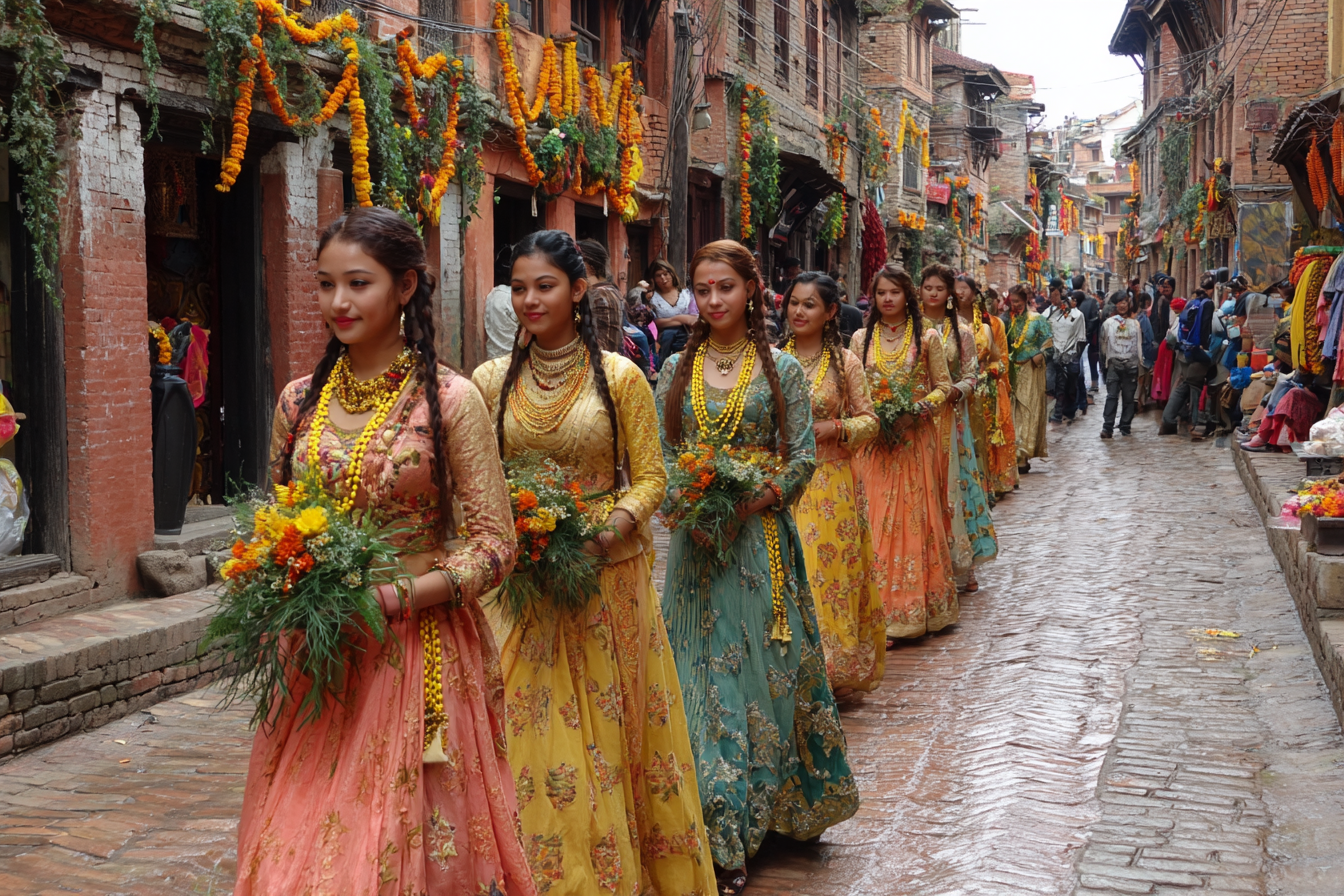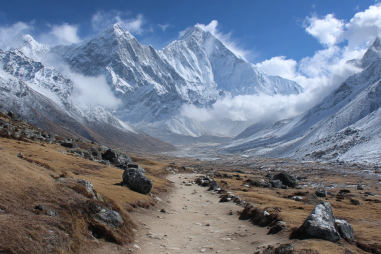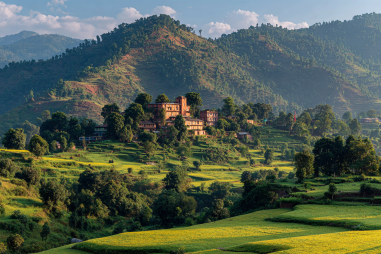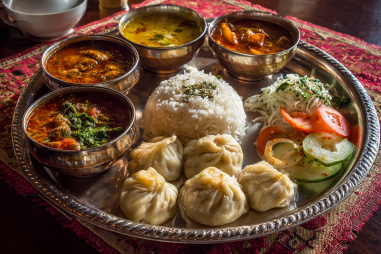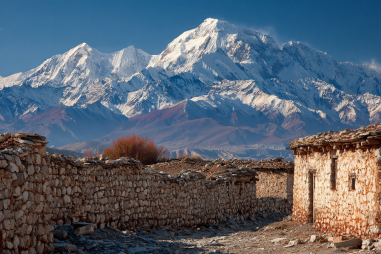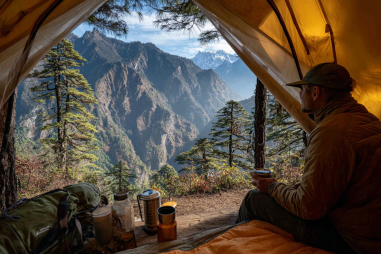Nestled in the hills of Nepal, Tansen is a picturesque town that offers more than just scenic beauty. It is a vibrant tapestry of cultures, traditions, and history that invites travelers to dive deep into its local way of life. From the bustling streets where the Newari community maintains age-old customs to the colorful festivals that light up the town throughout the year, Tansen provides a unique and enriching cultural experience. Whether you are a curious traveler or a culture enthusiast, exploring Tansen’s local culture and traditions will leave you enthralled and eager to uncover more.
Overview of Tansen’s Cultural Diversity
Tansen is home to a rich mix of ethnic groups, with the Newari people being the prominent community. Alongside them are other ethnic groups such as the Magars, Gurungs, and Brahmins, each contributing their own customs, languages, and traditions to the town’s cultural mosaic. This diversity manifests in the town’s architecture, religious practices, culinary delights, and social interactions, creating a dynamic environment that celebrates both individuality and unity. Visitors to Tansen will notice this cultural blend in the vibrant markets, traditional homes, and the multifaceted festivals that blend Hindu and Buddhist influences with indigenous customs.
The Newari Community and Customs
The Newaris are the original inhabitants of the Kathmandu Valley and surrounding regions, including Tansen. Their customs and traditions have been preserved for centuries, making their culture an essential part of Tansen’s identity. Known for their intricate crafts, traditional music, and festive celebrations, the Newari community places great emphasis on social harmony, family ties, and religious devotion.
One of the most distinguishing features of the Newari culture is their architecture, characterized by carved wooden windows and pagoda-style temples. The Newaris also speak Nepal Bhasa, a language rich in history and literature. Social customs involve elaborate ceremonies for life milestones such as births, marriages, and deaths, often accompanied by music, dance, and communal feasts.
Major Festivals and Celebrations
Tansen’s festive calendar is alive with events that showcase its cultural heritage. Some of the major festivals include:
- Bhoto Jatra: Celebrated with great enthusiasm, this festival involves a traditional ceremony where a sacred vest (bhoto) is displayed, believed to bring good fortune to the community.
- Indra Jatra: Marked by masked dances and chariot processions, this festival pays homage to Indra, the god of rain, and is celebrated across the Newar communities, including Tansen.
- Dashain: As Nepal’s longest and most important Hindu festival, Dashain is deeply observed in Tansen with family gatherings, animal sacrifices, and the blessing of tika (colored powders).
- Tihar: Also known as the festival of lights, Tihar honors various animals and deities with decorated houses, oil lamps, and joyful music.
These festivals are not only religious observances but social occasions that strengthen communal bonds and allow visitors a glimpse into Tansen’s cultural heartbeat.
Traditional Music, Dance, and Crafts
Music and dance permeate daily life in Tansen, especially during festivals and social gatherings. The Newari community is known for traditional instruments such as the damaha (a type of drum), dhimay, and sarangi. These instruments provide the rhythmic backbone for folk songs and religious hymns.
Dance forms like the Lakhey and Ghantu are spectacular displays of cultural expression, often performed during auspicious occasions. These dances are not just entertainment but hold religious significance, believed to ward off evil spirits and bless the community.
Tansen is also famous for its exquisite handicrafts. Newari artisans are skilled in creating intricately carved wooden items, traditional pottery, and metalworks. These crafts are often used in religious rituals and are treasured as cultural artifacts. Visitors can explore local workshops where these crafts are made, sometimes even participating in hands-on sessions to learn the techniques.
Local Cuisine and Culinary Traditions
Tansen’s culinary scene reflects its diverse heritage, with Newari cuisine taking center stage alongside dishes from other ethnic groups. The food is characterized by flavorful spices, seasonal ingredients, and communal eating traditions.
Signature Newari dishes you should try include:
- Yomari: Sweet dumplings made from rice flour filled with molasses and sesame seeds, traditionally prepared during the Yomari Punhi festival.
- Samay Baji: A platter of delicacies such as rice flakes, boiled eggs, fried meat, and spicy potato salad, typically served during special occasions.
- Kwati: A mixed bean soup traditionally eaten during festivals to provide nourishment and warmth.
Street food stalls and local eateries in Tansen offer these and other Nepali favorites like momos (dumplings) and dal bhat (lentil soup with rice), giving visitors a full taste of the region’s flavors.
Religious Practices and Rituals
Religious life in Tansen is a harmonious blend of Hinduism and Buddhism, mirroring the spiritual diversity of Nepal. Temples and stupas are scattered across the town, each with unique histories and rituals.
The Newari people actively engage in daily worship, rituals, and offerings to deities that represent various elements of life and nature. Priests and shamans (called jhankris) play vital roles in ceremonies, from blessing homes to conducting festivals. The rituals often involve chanting, the lighting of butter lamps, and the use of symbolic items like turmeric, rice, and flowers.
Visitors are encouraged to observe and respectfully participate in these religious customs, which foster an appreciation for the town’s spiritual depth and cultural richness.
Cultural Etiquette for Visitors
When exploring Tansen’s local culture, it’s important to act with respect and sensitivity toward traditions and social norms. Some general etiquette tips include:
- Dress modestly, especially when visiting temples and religious sites.
- Ask permission before taking photographs of people or sacred ceremonies.
- Remove shoes before entering homes and temples.
- Use your right hand for giving and receiving items, as the left hand is considered unclean in many Nepalese cultures.
- Be patient and open-minded—Iinteraction and communication may involve language barriers, but locals often appreciate effort and friendliness.
Following these guidelines will enhance your experience and show appreciation for Tansen’s cultural heritage.
Opportunities for Cultural Immersion
Tansen offers various ways for travelers to dive deeper into local traditions beyond sightseeing. Cultural homestays are popular, where visitors live with Newari families and participate in daily activities, cooking, and festivals firsthand. This immersive experience allows a genuine connection with local life and customs.
Workshops on traditional crafts, cooking classes focused on Newari cuisine, and guided cultural tours provide further insights into the heritage of Tansen. These activities not only educate but help sustain the local economy and preserve cultural traditions.
Additionally, community events and festivals often welcome tourists to join in singing, dancing, and communal meals, offering memorable opportunities to engage with Tansen’s living culture.
Embracing Tansen’s Heritage
Exploring Tansen is like stepping into a vibrant cultural mosaic where every alleyway, festival, and meal tells a story. The town’s rich traditions and welcoming communities make it a destination that transcends typical tourist experiences, offering meaningful connections to Nepal’s heart and soul.
Whether marveling at intricate Newari architecture, participating in lively festivals, savoring authentic cuisine, or simply sharing stories with locals, visitors to Tansen leave with a deeper understanding and respect for its heritage. By embracing the local culture and traditions, you not only enrich your travel experience but also contribute to the preservation and celebration of this unique hill town’s identity.

